Today is Superman Day, and to celebrate the occasion, we here at The Beat decided to ask our DC Round-Up team one simple question: What’s your favorite Superman story?
Now, we did set a few ground rules. We’re sticking to comics only, and we’re going to try to avoid picking the usual (and obvious) Best Superman Comics Ever picks, stories like All-Star Superman, Superman For All Seasons, Whatever Happened to the Man of Tomorrow, Kingdom Come, etc.
Those are all essential and foundational and great, obviously, and very much worth a read, especially today. But we tried our best to go just a bit beyond the usual, and so here’s what we came up with … enjoy!
Our favorite Superman stories
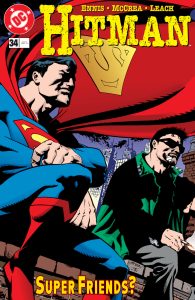
Writer: Garth Ennis
Artist: John McCrea
Inker: Garry Leach
Colorist: Carla Feeny
Letterer: Pat Prentice
Published: 1998
Why we love it: Tucked within Garth Ennis and John McCrea‘s excellent (and underrated) 60-issue, ’90s-spanning run of Hitman comics is my favorite Superman story: Hitman #34 – Super Friends? It features a relatively simple set-up: brooding anti-hero Tommy Monaghan (our titular hitman) is smoking on a Gotham rooftop, reading a news magazine about Superman. Then, much to his surprise, he turns and finds the Big Blue Boy Scout standing, pensively, on the same rooftop behind him. Something is bothering Superman, and so the two fall into conversation.
The issue features all of what makes this run special. It’s got Ennis’s deft mix of humor and deep characterization over McCrea’s wonderful take on superhero art, inked to edgy perfection by Garry Leach and colored by Carla Feeny. But what makes it such a memorable Superman story for me is its thoughtful and empathetic emotional core. In the grand scheme of Superman stories, this one is relatively grounded. It’s of its era, to an extent, playing out the Superman concept against a backdrop of realistic news: a technical failure on a routine U.S. space mission. Superman does his best to save a crew of endangered astronauts, but the circumstances make it impossible for him to save one, the captain, who ultimately perishes. What ensues is a conversation about living up to ideals, doing one’s best, and giving yourself grace in the face of failure. It’s also about America, immigration, and the idea of coming to a new land for a fresh, better start (our pal Matt Ledger writes about all that in-depth here).
It’s definitely a different type of Superman story, one that actively pushes away from the idea that he’s a perfect god-like figure, focusing more on him also just being a man. I love it for both its deep well of empathy — can we ever truly know what someone else is dealing with, and how hard it all is for them? — and its timely ideas about Superman being the ultimate American immigration story, which feels especially important to remember this year. —Zack Quaintance
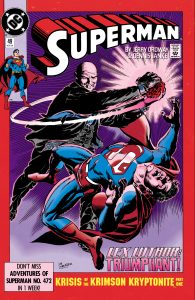
Writers: Roger Stern, Jerry Ordway, and Dan Jurgens
Pencillers: Bob McLeod, Jerry Ordway, Dan Jurgens, Dave Hoover, Kerry Gammill, Curt Swan, and John Byrne
Inkers: Brett Breeding, Dennis Janke, Art Thibert, Scott Hanna, John Byrne, and Jerry Ordway
Colorists: Glenn Whitmore and Tom McCraw
Letterers: John Costanza, Albert de Guzman, Bill Oakley, and Bob Pinaha
Published: 1990
Why We Love It: What makes a Superman? That’s the question asked by “Krisis of the Krimson Kryptonite,” a five-part story that ran in the Superman titles (plus one issue of Starman) towards the end of 1990. The story finds the Man of Steel stripped of his powers by means mysterious to him, adjusting to what it feels like and means to be an ordinary man, while still protecting the city of Metropolis as only Superman can.
This story has it all: an evil scheme by Lex Luthor, who at the time was dying of Kryptonite-caused cancer; Mr. Mxyzptlk, whose red K was the source of the loss of Superman’s powers; Superman facing The Fearsome Five’s powerhouse, Mammoth, armed only with a faulty forcefield belt and a rope and grappling hook, and donning an Iron Man-esque suit of armor to quell a prison break on Stryker’s Island. But it’s what happened out of costume in this story that’s most noteworthy, as this is the story where Clark Kent and Lois Lane become engaged to be married.
There’s no one of those things that makes this a great Superman story — it’s the combination of all of them. It’s a Silver Age-style story told with a modern sensibility, with a healthy helping of the soap opera-esque melodrama the Super-titles had perfected at the time. But most of all, like all great superhero tales, it’s about Superman overcoming impossible odds and still saving the day. Without his powers, in the face of unbeatable foes and ever-mounting challenges, Superman finds a way. There’s nothing more quintessentially Superman than that. —Joe Grunenwald

Writer: Grant Morrison
Artist: Howard Porter
Inker: John Dell & Ken Branch
Colorist: Pat Garrahy
Letterer: Ken Lopez
Published: 1997
Why we love it: Just months after revitalizing the JLA by making them the most powerful and well-known heroes in the DC Universe again, Grant Morrison was thrown a curveball by the Superman offices. You see, in order to spice up the Superman books at the time, the decision was made to redesign Superman’s costume and give him a brand new, different power set relating to energy absorption and blasts. Grant rolled with this new status quo, and did something that even the writers of the main Superman line struggled with at the time. They made Electric Blue Superman cool, but doing so in a way that relied on exactly what Superman is about.
Morrison’s second full arc on the book was about a self-exiled angel named Zauriel and his conflict with the other forces of heaven led by Asmodel. Asmodel was willing to do anything to silence Zauriel, even if that meant torching the entire Earth just to do it. Big cosmic threat, completely new Superman, how do you handle this conundrum. The Justice League needs Superman, but is this new version up to the task? Even Superman had doubts, he wasn’t sure of these new powers, but what could he do but try?
His first challenge came when, while Asmodel was waging war on Earth, Neron took advantage and had his minions try to pull the moon from orbit. Superman using his new energy powers generated an electromagnetic field strong enough to pull the moon back into orbit. But that was just him warming up, because after he was done with that, he went back down to Earth to relieve an embattled Martian Manhunter who had been going toe to toe with the archangel Asmodel. I’ll let the panels (and Wally) here speak for themselves, as Superman, with a completely new power set, wrestles an angel into submission.
In the end, JLA #6 and #7 did more to establish the baseline for this new version of Superman than any of his solo books did, and truly they did that by capturing what the core of Superman is about. This is a man who, if people are in danger, is going to do whatever it takes to keep them safe, even if he doesn’t even really know his own limits anymore. And in doing so, Morrison’s Superman proved to be exactly the hero his myth describes him to be. —Cori McCreery
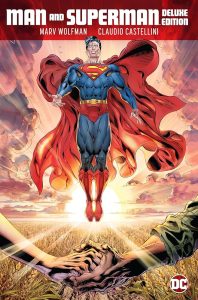
Writer: Marv Wolfman
Artist: Claudio Castellini
Colorist: Hi-Fi & Claudio Castellini
Letterer: Tom Orzechowski
Published: 2019
Why we love it: When I was asked for my favorite Superman story, I had to rack my brain; it’s hard to narrow it down. You have your giants, like All-Star Superman, Superman for All Seasons, etc. They’re the mainstays, and I would argue the most important, but for me, the one that has always resonated most is Man and Superman, scripted by Marv Wolfman and illustrated by Claudio Castellini.
The story follows a very green Clark Kent just starting his life in Metropolis. He’s not Superman yet, but he knows that he is burdened by great responsibility. He’s also terrified. Wolfman makes it clear that Clark knows when he puts the costume on that his life will never be the same, and at first things aren’t turning out the way he wants them to. Those early failures almost stopped him from becoming Superman. However, those same failures also showed Clark a very different side of humanity. It’s that very humanity that inspires him and, in turn, inspires us.
When Clark does inevitably take on the mantle, it’s one of the most memorable moments in a Superman comic ever. This comic is proof that it was never about the powers; it was always about the man. I find it a bit ironic that for Superman Day, I chose the one comic that focuses very little on Superman and zooms in on Clark. But honestly, how great is that? Clark Kent is the hero, Superman is just the way for Clark to get the message out. Wolfman claims that this is the greatest Superman story he’s ever written, and while some may disagree, it cemented itself as the Superman story I’ll always recommend to first-time readers. That kind of impact? That’s what makes Superman special. —Diego Higuera
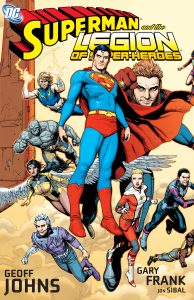
Writer: Geoff Johns
Artist: Gary Frank
Inker: Jon Sibal
Colorist: Dave McCaig & Hi-Fi
Letterer: Rob Leigh
Published: 2008
Why we love it: The best Superman stories are those in which the Man of Steel shows us exactly what he stands for: Truth, Justice, and a Better Tomorrow. In Superman and the Legion of Super-Heroes, that better tomorrow is in peril. The Earth of the 31st Century has embraced a perverted, xenophobic story of Superman’s origins and beliefs, endangering not only Superman’s friends in the Legion of Super-Heroes, but all aliens on Earth. Thankfully, the man himself travels to the future to set the story straight, and show the humans of the 31st Century that he’s not just for humans. He’s for everyone. That’s the truth at the heart of Superman; that’s the sense of justice he embraces. And it’s Superman’s ability to inspire us to live by his ideals that will, hopefully, lead us all to a better tomorrow. —Matt Ledger
Read more from The Beat’s DC Round-Up Crew
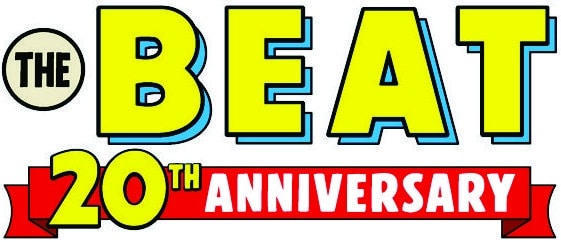

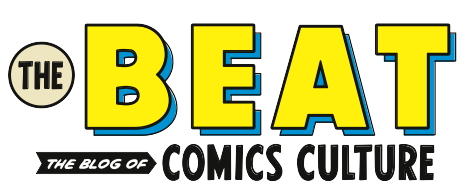
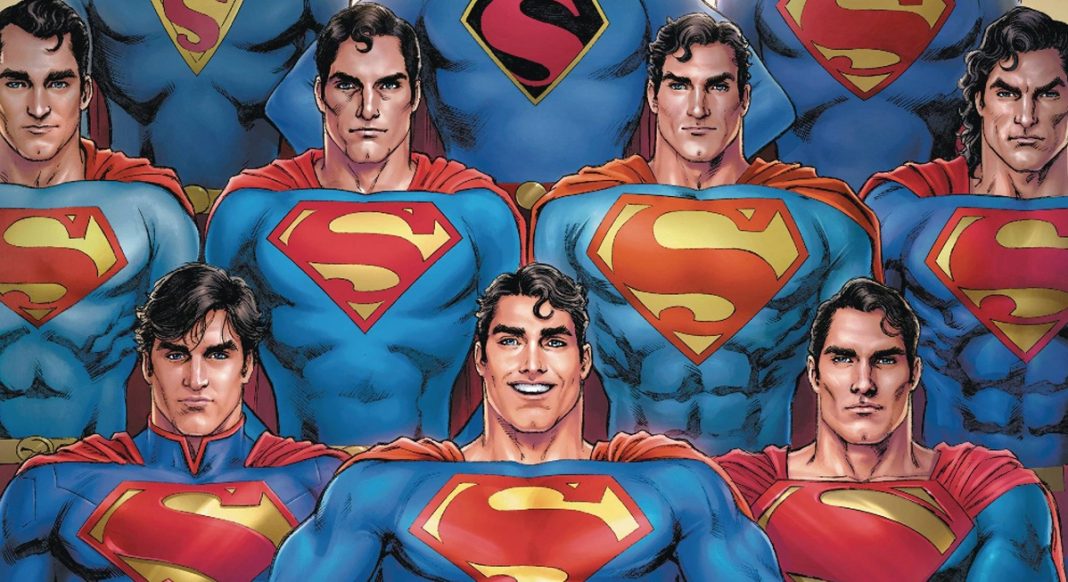
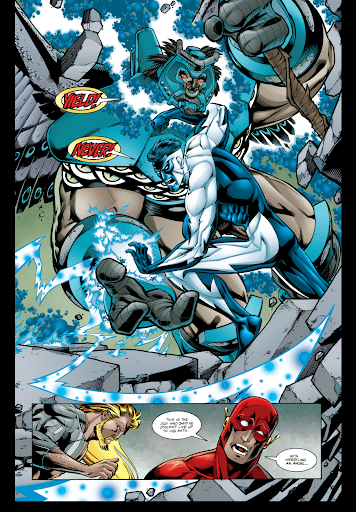


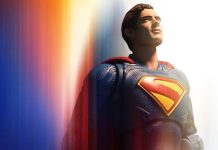





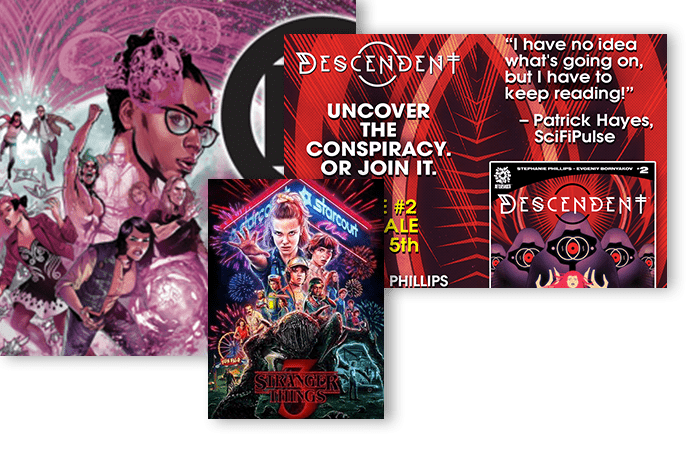
My brother and I still talk about the “wrestling an angel” line today.
It’s hard to narrow it down to a single story, but “What’s So Funny About Truth, Justice & and the American Way?” from Action Comics #775 in 2001 deserves special mention. An excellent story about the core values of Superman, a reminder of how an alien from another planet must always work twice as hard to be trusted, and a clear rebuke to the “Superman should kill” brigade, it has aged exceptionally well.